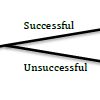Background checks are worth doing
I came across this paper while doing some “background checks” – as I like to call it – on the paper I reviewed the other day. By background check I mean reading the references and/or other papers that could shed some same or different light on the issues in the paper in review. And because in that paper capability was highlighted as an important issue in supply chain risk management I began investigating the concept of capability and found this paper here. A very interesting paper, and definitely an Aven-ish paper, even though he only appears as the fourth author.
Definitions of capability
The concept of capability is used frequently in scientific literature. However, despite the fact that researchers
and practitioners frequently use the concept of capability, they rarely seem to define it. So say the authors. Nonetheless, in their extensive literature review they manage to find no less than 13 different definitions or descriptions of capability:
Looking more closely at these definitions, the authors put forward five trends: that capability equates to resources, that resources are an important part of capability, that capability is related to ability, that capability is related to capacity, and that capability is something that affects a goal.
Capability explained
Building on Aven’s definitions of risk, vulnerability and resilience the authors describe capability in a very same manner, and this is where the paper really is the most Aven-ish:
Capability is the uncertainty about and severity of the consequences of the activity given the occurrence of an initiating event and the performed task.
Capability = (CT U | A T)
This is definitely not an easy definition to follow if you haven’t read Aven’s other definitions first, so let me recapitulate those.
Risk is the uncertainty about and severity of the consequences of an activity.
This relates risk to the familiar definition of risk as a combination of probability and impact, where probability is not seen seen as a deterministic value but as a value that is uncertain and must be taken into account as such.
Vulnerability is the uncertainty about and severity of the consequences of the activity given the occurrence of an initiating event A.
This links vulnerability to risk, saying that a given vulnerability depends on a given risk, but only manifests itself when triggered by an event, meaning that one cannot be generally vulnerable, but only vis-a-vis a certain risk and only triggered by a certain event related to that certain risk.
Resilience is the uncertainty about and severity of the consequences of the activity given the occurence of any type of A.
This links resilience to vulnerability, saying that resilience constitutes the sum of vulnerabilities (or perhaps non-vulnerabilities) in relation to whatever trigger. While one cannot be generally vulnerable, one can be generally resilient.
Going back to the definition of capability can thus be interpreted as the uncertain effect a certain task has that is performed in relation to a vulnerability. There is no general capability, only a certain capability in relation to a certain vulnerability, depending on how a certain task addresses this vulnerability.
Capability explored
Going back to the paper, the authors develop an excellent case example of how capability can be understood the way they have defined it.
In the case example they take the reader through a set of various scenarios where they develop a stepwise determination of capability given the success or failure of the previous step, thus demonstrating that capability is inextricably linked to a task with an uncertain outcome (success or failure).
Conclusion
I started out by saying that this is a very Aven-ish paper, and it is. What is so Aven-ish are the abstract definitions that twist your mind and must be thought through and dissected word by word, and put back together again. I must admit that I in the beginning of my blogging career and academic endeavours stayed away from Aven’s papers because they were hard to grasp and intellectually challenging for a qualitative researcher like me. That said, maybe I have matured or maybe Aven has become more pragmatic over the years (albeit I doubt he has), because his papers have gotten easier to read and understand since I first started to read them. As to the topic of capability I now know a lot more about it.
Reference
Lindbom, H., Tehler, H. , Eriksson, K. , Aven, T. (2015) The capability concept – On how to define and describe capability in relation to risk, vulnerability and resilience. Reliability Engineering & System Safety (135), 45-54. DOI: 10.1016/j.ress.2014.11.007
Download
- researchgate.net: The capability concept
Author links
- linkedin.com: Hanna Lindbom researchgate.net: Hanna Lindbom
- linkedin.com: Henrik Tehler researchgate.net: Henrik Tehler
- linkedin.com: Kerstin Eriksson researchgate.net: Kerstin Eriksson
- linkedin.com: Terje Aven researchgate.net: Terje Aven
Related posts
- husdal.com: Not all risk is risk
